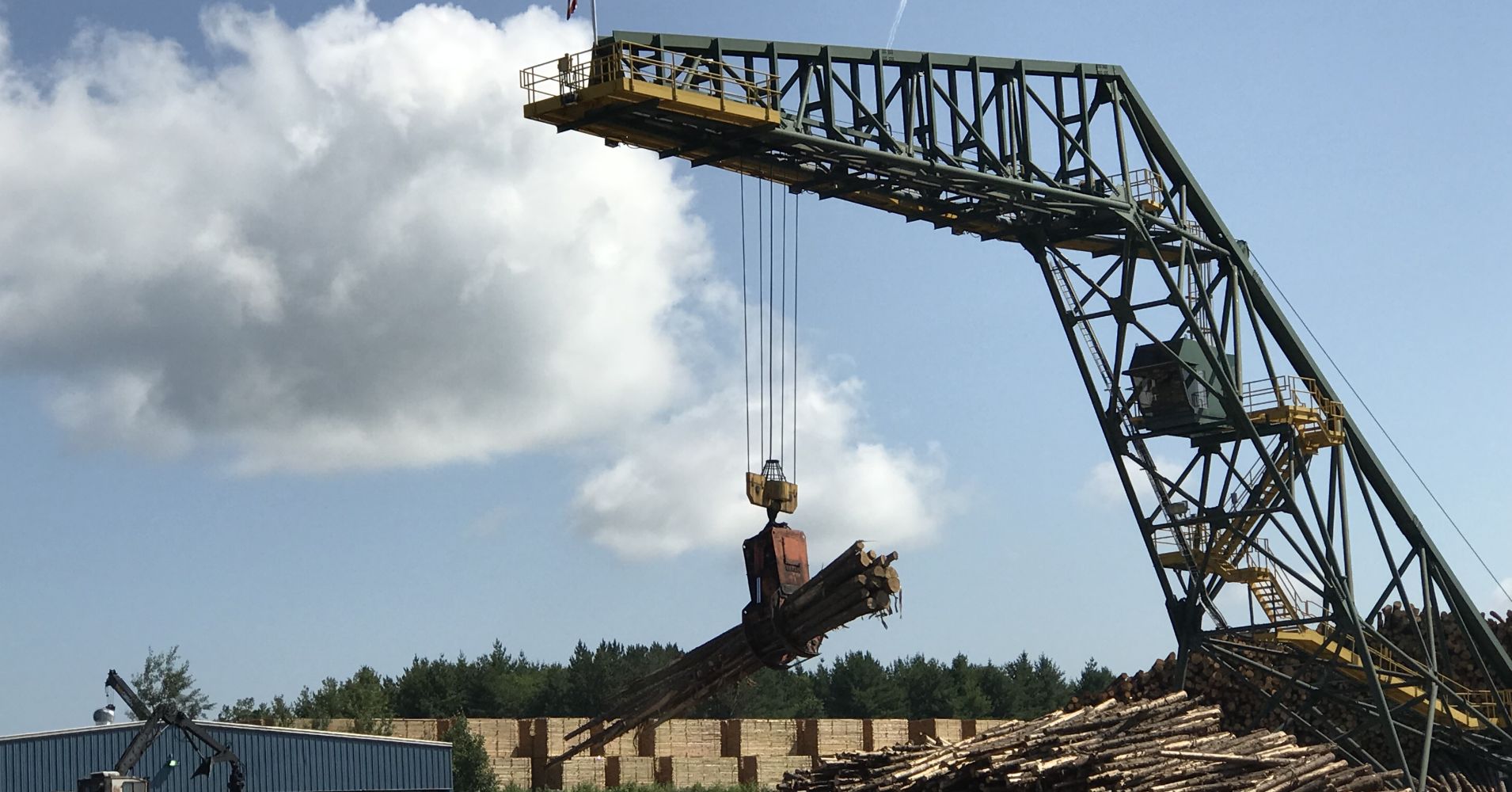In the woods of central Maine, trees are gaining value by the minute, and lumber producers aren’t waiting a second. They are scrambling to expand production, build new facilities and hire more workers.
Lumber prices soared over sixty percent since early 2017, thanks to a perfect storm that hit Canadian supply. First tree-eating beetles, then forest fires, transportation issues involving a shortage of trucking and rail cars, and finally, last fall, U.S. duties imposed on Canadian lumber that amount to a 20 percent tax on the commodity.
It all adds up to opportunity in the eyes of Jason Brochu, co-president of Pleasant River Lumber, which operates two mills in Maine, employing 300 workers.
“I think with the duties that are in place, that’s given us a level of confidence that we didn’t have before, and with a level playing field, looking ahead, the confidence we’re at, we’re able to expand and produce more lumber,” said Brochu.
The plan, he said, is to invest $20 million in the company over the next two years, increase production by 50 percent and add up to 40 new jobs. A large dirt pit is already forming near the current mill in Dover-Foxcroft, as workers blast open new ground for additional equipment and machinery.
“You’re seeing it throughout the country where mills are expanding, or building new mills, and our industry is starting to grow to meet the increase in the demand,” said Brochu.
Demand for lumber is rising as the housing market continues on its slow recovery. Housing starts were up over 18 percent in May year-over-year, according to the U.S. Census.
Canadian lumber currently supplies about a third of all U.S. demand, and while U.S. producers are planning to expand, there are plenty of roadblocks on the way to new mills.
“We’re going to need more land that you can harvest lumber on,” said Robert Dietz, chief economist for the National Association of Home Builders. “We’re going to need more mills in terms of increasing the production capacity, and that requires materials, it requires regulatory approvals, permits, and hiring, and let’s keep in mind the labor shortage has been affecting the housing market from a builder perspective. It’s also going to limit the uptake of sawmill producers and transportation to increase that domestic supply.“
Brochu admits it is hard to find enough workers in today’s competitive market, and wages are therefore going up. It also takes steel and aluminum and machine parts to build new lumber production facilities, and the U.S. just levied heavy tariffs on Chinese imports of these products. Brochu said on that front, he is not concerned.
“It’s not a factor in our decision-making. We’re not looking ahead saying, Oh Jeez, stuff might be more expensive so we’d better hold back,” said Brochu. “We feel confident that we’ll be able to put in the equipment we need at the price we need to put it in and expand and grow and we’re gonna do well.”
But so far this year employment in the lumber industry has been flat, and production has not increased by very much. The cost of lumber has come off its record high in March but is still elevated substantially. That increases homebuilder costs, and builders are thus passing those costs on to buyers.
“In 2017 we were expecting the tariffs to increase home prices by about $1,300, $1,400, It’s gone way beyond that, and currently the impact is about $7,500,” said Dietz.
Lumber supply is not keeping up with demand, so prices are unlikely to lose much ground in the short term. Producers still have a long runway ahead, which may be why they’re not concerned about the cost of expansion.
“We know there are going to be highs, we know there are going to be lows,” added Brochu. “What we try to react to is confidence. Things that are longer term give us confidence to spend money to improve the mill or expand the mill.”


 Signal2forex.com - Best Forex robots and signals
Signal2forex.com - Best Forex robots and signals




